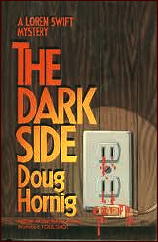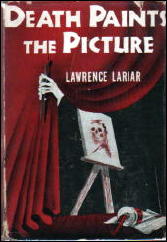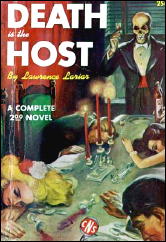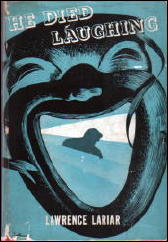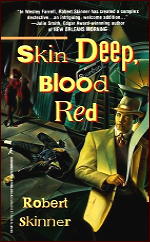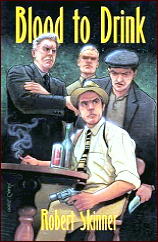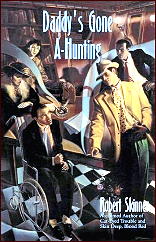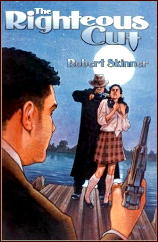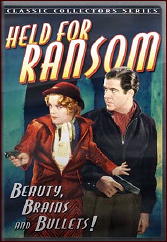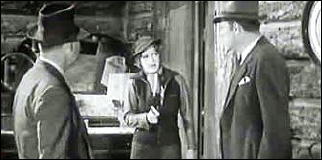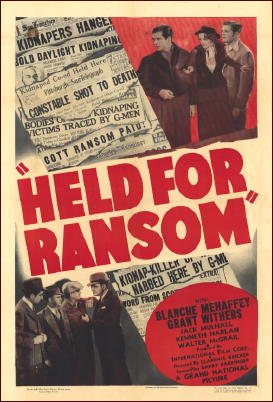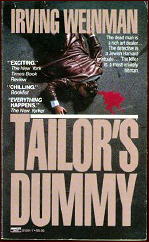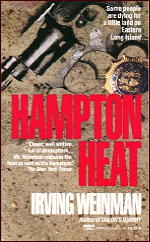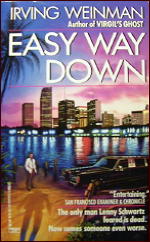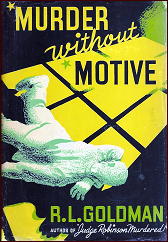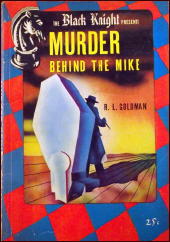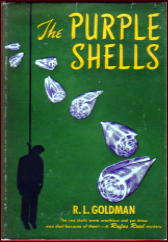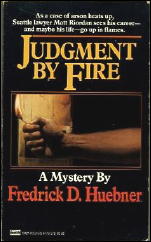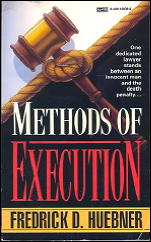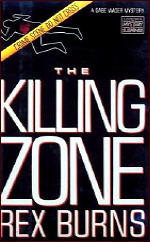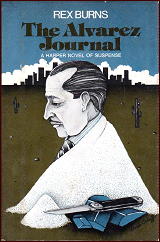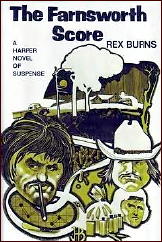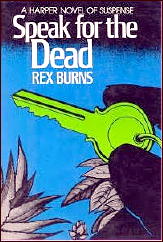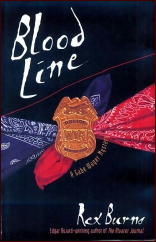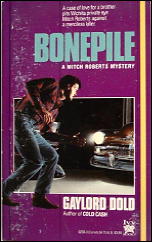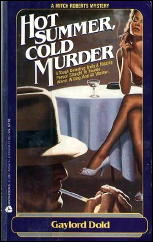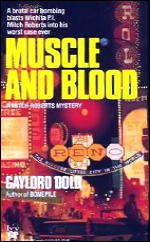Mon 23 Apr 2012
MAKE A LIST: TV’s Most Memorable Crime Fighters by Decade, by Michael Shonk.
Posted by Steve under Bibliographies, Lists & Checklists , TV mysteries[49] Comments
TV’s Most Memorable Crime Fighters by Decade
by Michael Shonk
I tend to avoid bestseller lists and top-rated television as I have always found more enjoyment with entertainment rejected by the masses. However, today I will turn away from my reviews of one forgotten TV series after another and focus on the most remembered.
Who is each decade’s most remembered TV cop, private eye, or any other form of crime-fighter? (The category “Others” below includes not only amateur detectives, but spies, lawyers, reporters, and any other character solving crimes who is not a cop or PI.)
THE 1950s:
Cops: DRAGNET (NBC). When Jack Webb brought his popular police radio show to TV it changed television. Best remembered for its unique dialog style, the opening and closing scenes, and theme music, but it was the series’ use of close-ups and narration to speed action along that soon became standard use in television.
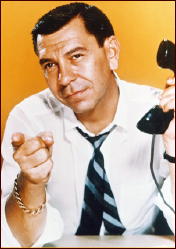
PI: PETER GUNN (NBC/ ABC) Created by Blake Edwards. The cool personality of Gunn (Craig Stevens) was unlike any other TV PI before. The eccentric characters that populated the stories, Mother’s jazz club with Gunn’s love interest and club singer Edie (Lola Albright) are all fondly remembered, but it was one of TV’s most famous theme songs (Henry Mancini) that made this show unforgettable.
Others: PERRY MASON (CBS) Based on characters and books by Erle Stanley Gardner, Perry remains TV’s most fondly remembered lawyer. Still popular today in syndication, who done it no longer matters; it is the interaction of the characters, Perry (Raymond Burr), Della Street (Barbara Hale), Paul Drake (William Hopper) and Hamilton Burger (William Talman) that still entertains us. The series also benefits from an unforgettable theme song.
THE 1960s:
Cops: THE UNTOUCHABLES (ABC) OK, this began in 1959, but name a more remembered and influential cop series in the 60s. Based on Eliot Ness’ memoirs (with co-writer Oscar Fraley), the series is still remembered for the protests from anti-violence and Italian-American groups. But it was the unforgettable narration of Walter Winchell, Robert Stack as Eliot Ness and its high production values that should be remembered. Among the many talented people involved with this Desilu Production was Quinn Martin who would become one of TV’s most famous producers of crime drama.
PI: MANNIX (CBS) Created by Richard Levinson and William Link, and more importantly, developed by Bruce Geller. The original premise of having old school PI Joe Mannix (Mike Conners) work at a modern computerized PI agency failed. The second season found Joe on his own as he was meant to be, with his African-American secretary Peggy (Gail Fisher), Mannix would become one of TV’s most remembered PIs series.
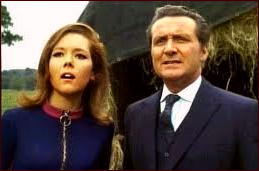
Others: THE AVENGERS (ABC) Created by Sydney Newman. This British TV series has existed in many forms, all with government agent John Steed (Patrick Macnee), but the best remembered version are the Emma Peel (Diana Rigg) years. Part of the 60s ITC British invasion of American television, the series was also noted for its surreal plots and modern fashion style of clothes. Kinky boots.
THE 1970s:
Cops: COLUMBO (NBC/ ABC) Created by Richard Levinson and William Link. The series began as part of the NBC Mystery Movie wheel series and resurfaced more than once since. Columbo (Peter Falk) is such an iconic character that his rumbled raincoat is better remembered today than most of last season’s television series.
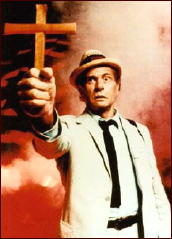
PI: CHARLIE’S ANGELS (ABC) Created by Ivan Goff and Ben Roberts. Three beautiful female PI’s work for the mysterious Charlie. The series would live on with two successful theatrical films and a failed TV remake. People still can name you their favorite Angel. (Mine’s Sabrina — Kate Jackson.). This series is remembered less as a PI show but as the perfect example of 70s TV, pretty, cheesy, mindless fun.
Others: KOLCHAK: THE NIGHT STALKER (ABC) Created by Jeff Rice and starred Darren McGavin as reporter Carl Kolchak. This is an example of how opinions of TV series can change over time. A few years ago the answer here would have been Six Million Dollar Man (ABC), but with the increase interest in supernatural fiction there has been a revival of interest in Kolchak. It would not be surprising if there are more people today aware of Kolchak: The Night Stalker than the number of people who watched it in the 70s.
THE 1980s:
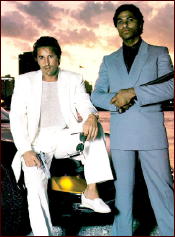
Cops: MIAMI VICE (NBC) Created by Anthony Yerkovich. Michael Mann took this TV buddy cop show with Don Johnson and Philip Michael Thomas and made it the perfect visual representation of 1980s pop culture.
PI: MAGNUM PI (CBS) Created by Donald P. Bellisario and Glen Larson. Set in Hawaii, Tom Selleck portrayed the easy going Thomas Magnum. Many today consider this series to be television’s best PI show.
Others: MURDER, SHE WROTE (CBS) Created by Richard Levinson and William Link and Peter Fischer, with Angela Landsbury as Jessica Fletcher, mystery writer and amateur detective. This series is television’s most successful attempt to create an American original traditional mystery worthy of Agatha Christie. As with many on this list it has survived cancellation with TV Movies. Currently survives in syndication and as a popular book series written by Donald Bain.
THE 1990s:

Cops: LAW AND ORDER (NBC) Created by Dick Wolf. This cop and lawyer series lasted twenty years, spawned several spin-offs and countless imitations. The famous two-note intro created by Mike Post joined the NBC chimes and Dragnet four-note opening in TV history.
PI: ROCKFORD FILES (CBS) The NBC-TV private eye series created by Stephen J. Cannell and Roy Huggins, made unforgettable by James Garner as Jim Rockford, returned to TV for a series of TV-Movies. It was a dark time for original TV PIs when the best-remembered of the decade was a remake of a PI from the 70s.
Others: X-FILES (FOX) Created by Chris Carter. This science fiction mystery featured David Duchovny and Gillian Anderson as two FBI agents solving strange crimes and dealing with a possible alien conspiracy.
THE 21st CENTURY:
Cops: CSI: CRIME SCENE INVESTIGATION (CBS) Created by Anthony E. Zucker. The series is remembered for its striking visual style, but its effect on society has gone deeper as its portrayal of forensic role in crime fighting has changed how real juries view forensic evidence such as DNA.
PI: VERONICA MARS (UPN/ CW) Created by Rob Thomas. Kristen Bell played a teenage student who got involved with her PI father’s cases. The series’ use of the season long arc story as a backdrop to weekly stand-alone episodes, as well as its school location, brought a new fresh look to the TV PI character that had been long in need of an update.

Others: CASTLE (ABC) Created by Andrew W. Marlowe. Richard Castle (Nathan Fillion) is a best selling mystery writer who tags along with Detective Kate Beckett’s team of homicide detectives. The series has such devoted fans there has been a series of “Richard Castle†Nikki Heat mystery novels published and make the NY Times bestseller list for real.
Editorial Footnote: In the first posting of this list, Michael called his third category “Amateurs.” As the discussion of his choices went along, it was generally decided that the concept of amateur detectives was too small to include all of the non-cop and non-PI series that came up for consideration. Rather than expand the number of categories, Michael has agreed to call the category “Others” instead (actually his first choice). Any crime-fighting series involving characters who are not cops or a PI now belong to this newly formulated category, as you see it now.
